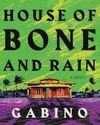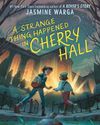
Years ago, when I first began studying plot structures, I came across the Freytag Plot Pyramid, triangular structure that contained five elements: exposition, rising action, climax, falling action, and denouement. Suddenly aware of this structure, I began to notice it in various books and films I enjoyed. I even noticed its usage in many of the comedies I watched. The first time I saw the movie Friday, I marveled at how seamlessly I was able to learn the backgrounds of the characters, as well as their motivations, within the first few minutes of the film, each of the elements of Freytag's Plot Pyramid falling neatly into place. I would later come to understand that these elements are often expected by the audience, so when they are absent, a viewer or reader might say they didn't really enjoy a story or film due to a particular part of the plot that failed to measure up to their expectations, or maybe there was something about the ending that they felt just did not work.
When I began to employ this new-found (to me) plot structure in my own writing, I quickly confronted a question: How does a writer help the reader to navigate from the exposition to the rising action? At best, that's a bit of a leap to go from setting up a story to cranking up the conflict. I would later understand that this missing component of the plot pyramid was something commonly referred to as an inciting incident.
This story is from the July - August 2023 edition of Writer’s Digest.
Start your 7-day Magzter GOLD free trial to access thousands of curated premium stories, and 9,000+ magazines and newspapers.
Already a subscriber ? Sign In
This story is from the July - August 2023 edition of Writer’s Digest.
Start your 7-day Magzter GOLD free trial to access thousands of curated premium stories, and 9,000+ magazines and newspapers.
Already a subscriber? Sign In

Writing for a Warming World - Imagining the overwhelming, the ubiquitous, the world-shattering.
Climate change is one of those topics that can throw novelists—and everyone else—into a fearful and cowering silence. When the earth is losing its familiar shapes and consolations, changing drastically and in unpredictable ways beneath our feet, how can we summon our creative resources to engage in the imaginative world-building required to write a novel that takes on these threats in compelling ways? And how to avoid writing fiction that addresses irreversible climate change without letting our prose get too preachy, overly prescriptive, saturated with despair?

Kids' Author Meg Medina Inspires Readers
WD chats with the National Ambassador of Young People’s Literature.

The Horrors of Grief
Whether hot off the presses or on the shelves for years, a good book is worth talking about.

The Mystery of Growing Up
New York Times-bestselling author Jasmine Warga tackles a new genre with her signature blend of empathy for her readers, agency for her characters, and the belief that art is the great connector.

Education
Even if it's not your thing, you're probably familiar with the term dark academia.

A Do-Over Romance
Karin Patton, the first-place winner of the 24th Annual Writer's Digest Short Short Story Awards, shares a funny story about secondchance love and a brief Q&A.

Everyday Wonder
How to mine awe from the mundane

From Ordinary to Extraordinary
Unveil the hidden beauty in the facts and transform your nonfiction with the power of wonder.

Childhood: Our Touchstone for Wonder
How to get in touch with Little You and create big new work for today.

Agent Roundup
22 agents share details, about what kind of writing will pique their interest and offer tips for querying writers...